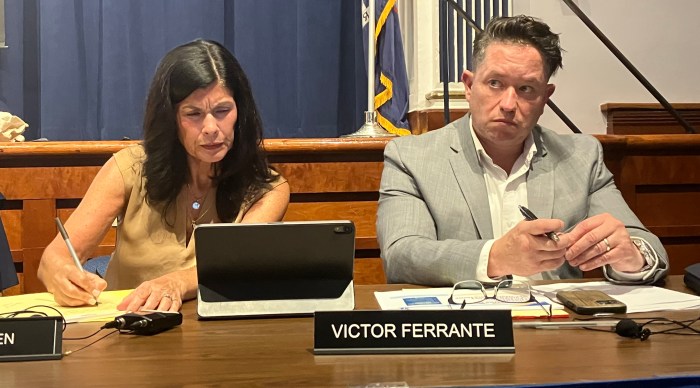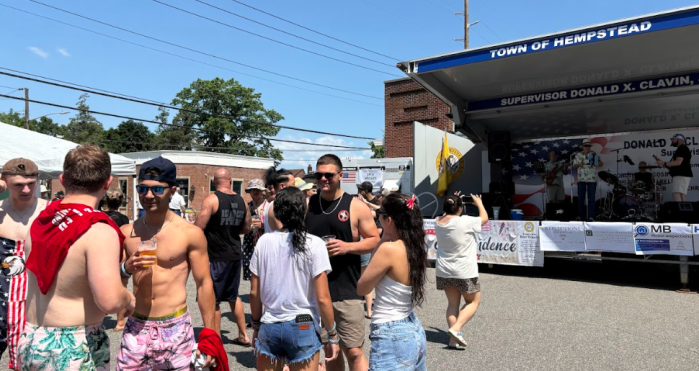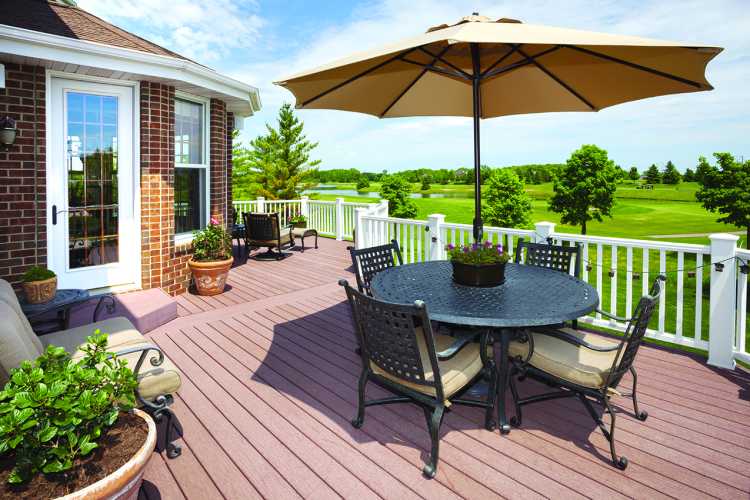The Sewanhaka Central High School District’s ad hoc committee is still reviewing options for a second bond referendum, to be put up for a vote either in May during budget and school board elections or a special election in the fall. The district proposed a $99.5 million bond for various repairs to its five high schools in December, which failed by 293 votes.
Five options are before the ad hoc committee. The first is a vote on the original bond for a second time, with elimination of electronic signs and some capital work. The second and third options would decrease the bond issue, to $84,606,691 in one case or $87,029,591 in another. The fourth option would total $89,577,091. The fifth option is split into two: $73,567,876 in infrastructure repairs, improvements; and a separate $16,009,215 in athletic renovations and upgrades. The School Board will review the options in preparation for a special meeting on Tuesday, March 18.
“We’ve looked at several variations [of bonds],” District Superintendent Dr. Ralph Ferrie said at an ad hoc meeting on Tuesday, March 4. “We’ve spoken to different people throughout the communities and we’ve taken in information that was shared at the last meeting.”
Sewanhaka has solicited request for proposals on performance energy contracts, which would let companies evaluate building lighting, windows, roofs, HVAC systems, etc. for renovation. Any savings would decrease any bond option’s amount by an estimated $10 million and increase building aid from New York State, according to Ferrie. He indicated that at least two RFPs have been submitted to Sewanhaka.
“That energy contract holds true to [the first] four options,” said Ferrie.
Option two includes a reduced plan of additions and eliminates improvements at Floral Park Memorial High School and outside seating areas at H. Frank Carey High School.
“We’re in a situation now that none of us in this room created,” Ferrie said. “We’re in such a challenging environment that every decision that we make has an impact on somebody.”
The third option would keep air conditioning and auditorium restorations. Option four would restore the full-size gym at Elmont, three large instruction rooms at Floral Park and the original field design in New Hyde Park.
Option five was first revealed to the committee last Tuesday. This plan would put building and field work before voters as two separate items. That means one could pass without the other. If field work was approved by itself, Sewanhaka would not get state building aid—money the district is counting on.
“In my travels [around the district], no one has said the infrastructure and the additions are not necessary,” Ferrie said. “If you do a two-proposition question like this, it has to be written in a way that proposition two cannot pass unless [one] passes. You can’t have the fields and not have buildings.”
Committee members involved in the athletic departments disagreed about separating the bonds.
“The fields are necessary today. Garden City is outside practicing. Our kids are in the gym practicing baseball,” Sewanhaka High School Athletic Director John Niven said. “I think putting it separate, people will just blow it right off. There is no way people are going to vote for both.”
Jon Johnson, an athletic director from Elmont, echoed Niven, saying a separate proposition gives an “out.”
“It lets them eliminate [the field work],” Johnson said. “It’s not a good idea.”
Craig Barbieri of New Hyde Park favored splitting the bond, stating that passing the infrastructure is imperative.
“I coach a great deal and I believe athletics are important, but I’m in favor of splitting it up for a vote in the fall,” he said. “You have one shot again. If it doesn’t go and you don’t get the infrastructure done, all of that will be thrown into [next year’s] budget.”
Committee member Cheryl Scarry said residents would reject the bond after learning that the district is considering eliminating up to 20 teaching positions in the 2014-15 budget.
“You’re talking about possibly losing 20 teachers and that has nothing to do with [the bond], but people don’t know that,” she said. “People are not going to [approve] it.”
Some feel voter turnout—traditionally better at the May budget vote than in September—is the key to a passed bond.
“Historically, you get 90 percent of the people who stay home,” said school parent Mike Fogarty. “You just don’t get a turnout.”
A fall election would be costly, too: another $120,000-$130,000. A majority of the committee favored a May vote.
Jon Johnson felt that it’s crucial to come up with a plan that is strong enough to survive a vote, whether it be in May or the fall.
“You have to take a swing at the plate,” Johnson said. “You can’t stand here now and give options like this and know that it might not even work.” Ferrie admitted a sense of urgency, but warned against a rush to judgment. “Whatever we put up next time, it has to pass,” Ferrie stated.


































